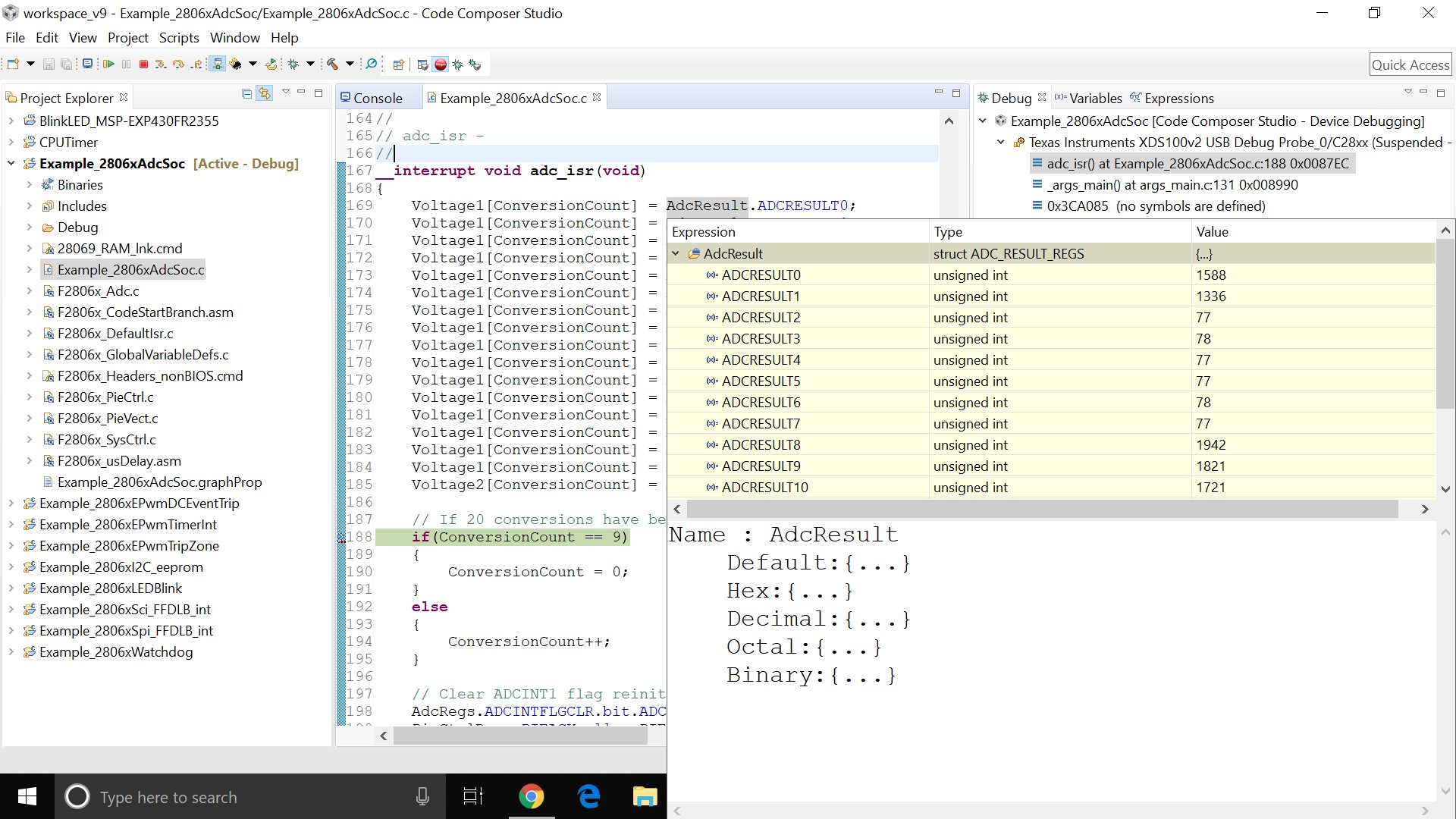Other Parts Discussed in Thread: LAUNCHXL-F28069M,
Tool/software: Code Composer Studio
Sir, Thanks In Advance.
I have down loaded Example_2806xAdcSoc, and I have Launchpad LAUNCHXL-F28069M.
I compiled and ran program in debug mode successfully.
I shorted, J1-PIN-1 (+3.3V) and J3-PIN-25 (ADCINA2), Expecting ADCResult1 will show Value 0xFFFFh.
I did not get ADCResult1 = 0xFFFFh.
I tried to see all ADCResult0 To ADCResult15, and I got none of them equal to or near by value 0xFFFFh, by pacing cursor over line,
Voltage1[ConversionCount] = AdcResult.ADCRESULT0; and word ADCRESULT0 To ADCRESULT15.
My Program Example_2806xAdcSoc.C is as follows.
V. Gohil


